The charm of fragments
About reconstruction of Bach cantatas
How do to deal with material where both scores and parts are missing or have only survived in fragments? Based on three fascinating cantatas by Johann Sebastian Bach, chief editor Dr. Uwe Wolf shows how musicologists and performers bring lost or incomplete masterpieces back to life through careful reconstructions. Be inspired by the investigative background stories and discover the exciting puzzles that these musical fragments still pose today.
The fragmentary tradition has always played a major role in art. While a work of fine art – such as an incomplete antique sculpture – can also be regarded as a torso, a fragmentary piece of music often needs to be completed in order to be performed and thus experienced. A number of famous works from the history of music can only be performed in reconstructions or completions by third parties: consider the C Minor Mass (Carus 51.651) and Mozart’s Requiem (e.g. Carus 51.651) – two works whose fame is even based to a substantial extent on their fragmentary character and the legends surrounding them!
Today, many of Johann Sebastian Bach’s vocal works are available to us both as the autograph score and the set of parts used by Bach himself. This is a comfortable situation which we owe to early collectors and preservers, above all Bach’s second eldest son Carl Philipp Emanuel. Only in this ideal instance of transmission does a complete picture emerge, since many details – scoring, articulation, dynamics, ornamentation, sometimes even the lyrics – are missing from the scores, and the parts frequently contain errors. Nevertheless: if both the score and the parts have survived, it is not so important if one of the sources is deficient, as what is missing can easily be gleaned from the other. In the case of our three fragments, no complete copy of the original version has survived. For BWV 80.1, neither of the two sources has survived, but other versions have; there is only a single source for BWV 197.1 , and that is fragmentary, whereas for BWV 190.1 both sources are extant, but they are both incomplete.
As a musicologist, Dr. Uwe Wolf is particularly at home in the 17th and 18th centuries. The focus of his work ranges from the time of Monteverdi and Schütz to Bach and the generation of Bach’s sons and pupils through to Viennese Classicism. He has been head of the editorial department at Carus-Verlag since October 2011. Prior to this, he worked in Bach research for over 20 years.
Johann Sebastian Bach
Ein feste Burg ist unser Gott
(A mighty fortress is our God)
Cantata for Reformation Day. Reconstruction Klaus Hofmann
BWV 80 (BWV3 80.3)
Carus 31.080/00
The cantata Alles, was von Gott geboren (All those born of God) BWV 80.1 (formerly BWV 80a) is the original form of the well-known cantata for the Feast of the Reformation Ein feste Burg ist unser Gott BWV 80.3, of whose direct predecessor – the first version of the Reformation cantata BWV 80.2 (formerly 80b) – only a single autograph page has survived. It contains a simple chorale movement as the opening movement instead of the later chorale chorus, as well as the beginning of the second movement. The printed libretto of a cantata by the Weimar court poet Salomon Franck for Oculi Sunday 1716 proves that these two Leipzig versions of the Reformation cantata had a Weimar predecessor. It largely corresponds to the text of the Reformation cantatas, although – apart from the final chorale – the chorale verses are missing. There is therefore also no indication that the ornamented cantus firmus in the opening movement of the Oculi cantata might have been sung (movement 2 of the Reformation cantata); it was probably performed purely instrumentally, but the choice of the well-known Luther chorale was decisive for its later reworking into the Reformation cantata. In its form as a cantata for Oculi Sunday, Bach would not have been able to use it in Leipzig, as there were no cantata performances on Oculi, which is during Lent. With the help of the printed libretto, the autograph fragment, and a suitable movement for the final chorale preserved in collections of J.S. Bach’s chorales (BWV 303), the Göttingen Bach scholar Klaus Hofmann was able to reconstruct the 1716 version with a high degree of certainty – even though Bach may have changed details in the course of the multi-stage editing process.
The cantata Ehre sei Gott in der Höhe (Glory to God in the highest) BWV 197.1 (197a) is also only preserved in its entirety as a text print in the so-called “Picander-Jahrgang” from 1729. The original parts have all been lost and only the last folio of the score has survived, which contains the end of aria no. 4 and movements 5–7. Aria no. 4 – perhaps one of Bach’s most beautiful arias ever – was later used again by Bach in the Wedding Cantata BWV 197.2. The Wedding Cantata thus helps with the reconstruction of this movement, but unfortunately not with the missing movements 1–3 of the Christmas Cantata. However, there has long been a fervent speculation regarding movement 1: the first movement of the Gloria of the Mass in B minor (Carus 31.232/01) not only contains the same text – albeit in Latin – as the opening chorus of our cantata, but has also been suspected since 1992 (Alfred Dürr) of being a parody, i.e., a rewriting of the opening movement of our Christmas cantata: Bach’s autograph of the Gloria is far too neatly written for a first transcription and there are corrections, particularly in the four high vocal parts (soprano I, II, alto and tenor), which give the impression that a four-voice movement has been expanded to five voices. The Dutch organist and musicologist Pieter Dirksen has now attempted for the first time to restore the Gloria to the four-voice form of the cantata setting on the basis of the corrections in the autograph and to underlay the German text; both work surprisingly well.
Johann Sebastian Bach
Ehre sei Gott in der Höhe
(Glory to God in the highest)
Cantata for the 1st day of Christmas. Reconstruction Pieter Dirksen
BWV 197a (BWV3 197.1)
Carus 31.402/00
However, there are no comparable clues for movements 2–3. For the aria movement 2, Dirksen searched for a possible parody model not too far removed in time. He found it in the tenor aria Verstummt, ihr holden Saiten from the Funeral Ode BWV 198 of 1729, a movement which is also well suited in terms of key and scoring; nevertheless, the parody relationship remains (plausible) speculation. The recitative movement 3 is certainly lost, as recitatives are not suitable for parody. However, in order not to invent something completely freely, Dirksen drew on the accompagnato from BWV 174 (also from the “Picander-Jahrgang”), of which the beginning is almost identical. Although he had to reinvent the continuation of the accompagnato, he was at least able to set out from some genuine Bach music.
As with many of Bach’s cantata scores, the notation of the final chorale in the autograph version of BWV 197.1 was neglected for reasons of space: there was so little space that Bach was only able to notate the vocal part, without text, on merely 2 staves. The text is easy to add from the printed libretto, but the festive disposition of the cantata with trumpets and timpani in the opening movement makes it unlikely that they would have been silent in the final chorale, so these also needed to be extrapolated (following the numerous available models).
With the accompagnato and the trumpets of the final chorale, we have already left the path of philological reconstruction in the direction of composition. And compositional skills are called for in the last of the three cantatas, the New Year’s Cantata BWV 190.1. Two fragmentary sources have survived: an autograph score, which however only contains movements 3–7, and a set of parts consisting only of the four vocal parts and two violin parts. The original cover, which has also survived, provides information about the overall instrumentation: “à 4 Voc:, 3 Clarini, 1 Tamburi, 3 Hautbois, Bassono, 2 Violini, Viola, con Continuo.” This means that 3 trumpets, timpani, 3 oboes, bassoon, viola and the continuo parts are missing.
In movement 2, the loss is obviously negligible: trumpets and timpani would certainly have been silent and if the woodwinds were to be involved, then at most in the chorale sections colla parte with the vocal parts, as is also notated in the surviving violin parts and can certainly also be assumed for the viola. So “only” the continuo part is missing. In the chorale sections of this recitative with chorale, that is not a major problem either (the continuo doubles the vocal bass), but in the recitative sections the bass – and thus the harmonic flow – must be added to the only surviving voice part; a compositional task that the harpsichordist and composer Massato Suzuki took on together with his father, the Japanese Bach conductor Masaaki Suzuki.
In movement 1, the compositional task is even more complex, as a large part of the instrumental apparatus had to be added, a task that requires both a connoisseur of Bach’s music and an accomplished composer. And a task that can only ever be an approximation, as the losses leave plenty of scope for different solutions.
Johann Sebastian Bach
Singt dem Herrn ein neues Lied
(Sing to the Lord a new-made song)
Cantata for New Year’s Day. Reconstruction Masaaki und Masato Suzuki
BWV 190 (BWV3 190,1)
Carus 31.190/00
It is particularly Singet dem Herrn ein neues Lied (Sing to the Lord a new-made song) BWV 190.1, the cantata with perhaps the greatest scope and uncertainties among our three cantatas, that has repeatedly inspired new reconstructions, the first of which was created more than 100 years ago. But is it really necessary to reconstruct fragmentary works? Are the surviving works not sufficient? Fragments have a special appeal; this is music that seems close enough to touch, and yet is lost. And they pose riddles that need to be solved! Nevertheless, to publish a reconstruction as opposed to merely reconstructing a work requires more than merely the allure of the puzzle. There must be something extraordinary about the work to be reconstructed, it must add a distinctive element to the performable oeuvre. And Bach must be recognizable in the reconstruction, i.e., there must be enough original material to allow a meaningful reconstruction! All this is by no means the case with all the reconstructions that can be heard every so often nowadays. The reconstructions on this CD, however, can be said to fulfill these requirements completely, and in a different way for each cantata.

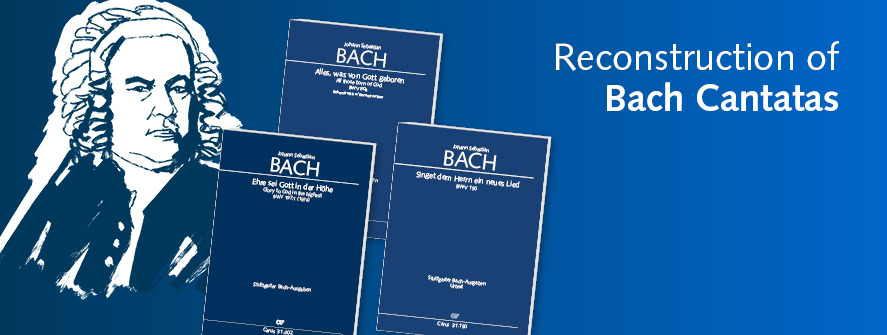
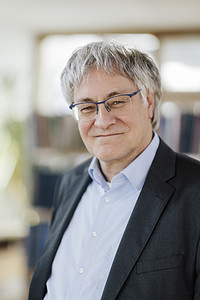
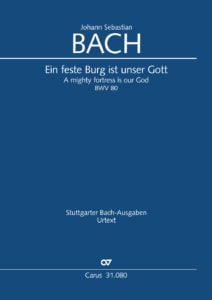
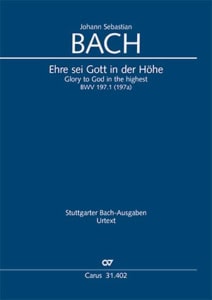

 The Reformation cantata Ein feste Burg ist unser Gott BWV 80b, published by Carus-Verlag for the first time in a practical performing edition, remained unknown to Bach scholars until well into the 20th century. The evidence of its existence is three fragments of the first folio of Bach’s score, which can be dated to the years 1728-1731. A relaxed, contrapuntal four-part chorale movement with the first and last verses of the Lutheran hymn forms the framework, and the other movements are the same as in the later new version. This simpler cantata is also entirely suitable for celebrating Reformation Day, as Bach did around 1730.
The Reformation cantata Ein feste Burg ist unser Gott BWV 80b, published by Carus-Verlag for the first time in a practical performing edition, remained unknown to Bach scholars until well into the 20th century. The evidence of its existence is three fragments of the first folio of Bach’s score, which can be dated to the years 1728-1731. A relaxed, contrapuntal four-part chorale movement with the first and last verses of the Lutheran hymn forms the framework, and the other movements are the same as in the later new version. This simpler cantata is also entirely suitable for celebrating Reformation Day, as Bach did around 1730.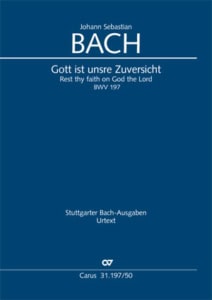
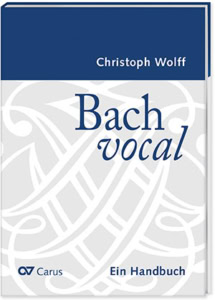
 (c) Sven Cichowicz
(c) Sven Cichowicz
Leave a Reply
Want to join the discussion?Feel free to contribute!